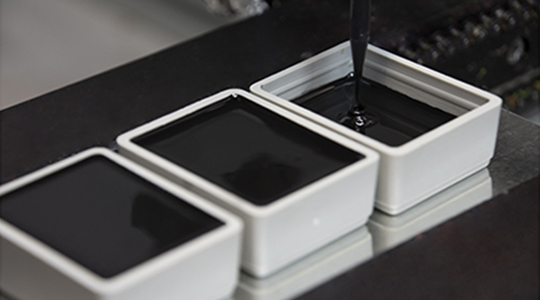Here at Electrolube, one of the most frequently asked questions we receive from customers is “which is better to protect my PCB, a coating or a resin?”. PCBs are found in many domestic, industrial, automotive and military devices and require protection from their environment. Lack of protection can lead to reduced performance or in the worst case, complete failure. Protection can be offered in the form of conformal coatings or potting and encapsulation resins. In this month’s column, Phil Kinner will demystify why one may be more suitable for your application than the other. Like any good engineering answer, it depends on the degree of environmental protection required. The first point for consideration is often the design of any housing within which the PCB will be enclosed. If an assembly is enclosed in a housing, which is designed to be the primary environmental protection, then a conformal coating is often used to provide a back-up to the primary protection provided by the housing. Where the housing is not suitable or capable of providing primary protection of the assembly from its operating environment, then most times a resin might be a better choice.
If we look at both coatings and resins, then we can consider what is common between the two, both are generally organic polymers, which can cure to form an electrically insulating layer that provide some degree of chemical and thermal resistance. There is a degree in commonality in the chemistry of the polymers used, with acrylic, epoxy, polyurethane and silicone being the most often encountered. So, without further ado, let’s explore coatings and resins in more detail in our five point format:
1. What is an encapsulation resin?
Potting and encapsulation resins offer the highest level of protection for PCBs. Resins can be applied from 0.5 millimetres thick upwards, and are generally applied much thicker than this. The increased thickness leads to a significant increase in weight and often results in a greater per unit price than a coating. However, the increased thickness does mean that the PCB is far better protected against chemical attack, particularly in the cases of prolonged immersion. Also a resin can provide superior protection against physical shock (depending upon the formulation), since the bulk of the resin will help to dissipate the forces. A layer of dark coloured resin can also completely hide the PCB, which allows for some security of the design, and depending upon the choice of the resin, removal of the resin can also result in the destruction of the PCB. With so many varying options to protect electronic circuitry, there’s a lot of ground to cover, and depending on the application, sometimes a conformal coating may be more suitable, particularly with the two-part coating series that performs like a resin.
2. What is a conformal coating?
Conformal coatings can be used to protect the PCBs in a variety of applications, ensuring optimum performance in the harshest of conditions. They are generally thin films applied in the 25-250 micron dry film thickness range, leading to a minimal weight increase of the assembly. Conformal coatings conform to the contours of the board, providing maximum protection with minimal weight or dimensional change to the PCB. This is possibly the primary advantage of conformal coatings over potting and encapsulation resins. Often coatings are clear, so the coated components are easy to identify and the coating can be easily reworked and components replaced as required. The chemical and thermal resistance of coatings is generally good for short exposures. A coating applies relatively little stress upon the components, this is a particular advantage where a component has thin leads or legs. The majority of coatings are 1K (single component) systems, which have a long useable life, a low curing or drying temperature and short drying time. Being a single-part solution, they are clearly easier to process and apply; however, the majority of 1K coatings are solvent based in order to modify their viscosity for application purposes. Conventionally, coatings can be applied manually by use of a paint brush, spray gun or even manually dipped. However, increasingly, coatings are applied by robotic selective coating systems to provide a more controlled and more consistent process.
3. Is it possible that a conformal coating can perform like a resin?
To confuse matters further, the simple answer to this is yes! We have developed a wide range of two part (2K) conformal coatings, which combine the protection and properties of a resin, with the ease of application of a conformal coating but without the use of solvents, giving them an environmental advantage. The 2K coatings provide excellent coverage and their superior flexibility offers protection of delicate components. 2K coatings also deliver excellent mechanical properties and abrasion resistance but, being two-part, they require more sophisticated application equipment than 1K coatings and they are more difficult to remove, making board repair more difficult. Based on similar two-part chemistry to resins, 2K coatings are designed to be applied by selective coating equipment in the 200-400 micron (0.2 – 0.4 millimetres) range, thus, combining many of the advantages of both technologies and minimising many of the drawbacks of each.
4. What are some key differences between resins and coatings?
The most noticeable differences are the methods of application (aerosol, conformal coating spray equipment, manual spray gun and brushing for coatings, compared to mixing and dispensing equipment and resin packs for resins). The materials are applied at different thicknesses (<100 microns for conformal coatings, <500 microns for 100% solids coatings and >500 microns for resins).
Coatings are generally approved to international standards (IEC-1086), military standards (MIL-I-46058C) or industry standards (IPC-CC-830) or national safety standards (UL746), while for resins it is very much dependent upon the application, and there are very few standards.
Due to the coating thickness, coatings occupy less volume and have a lower increase in overall weight compared to resins. There are both coatings and resins that are based on epoxy, polyurethane and silicone chemistries, but there are also acrylate, acrylic and parylene coatings which do not have a direct resin equivalent. 99% of resins are 100% solid systems, so have low or no VOC’s released during curing, while many coatings are high in solvent content, although there are 2 component (2K) and UV curable acrylate systems that are also 100% solids available.

5. Why would I choose a resin instead of a coating?
Fundamentally, the choice will often depend on the design of the housing. If the housing is designed to be the primary protection, then a coating will often be used to provide secondary protection or additional insulation. If the housing is not the primary barrier to the environment, then an encapsulation resin will often be used to augment or replace the housing.
The choice between a resin or a coating is normally down to application specifics. If the unit involved is to be subject to long-term immersion in various chemicals, subject to long term thermal and/or physical shock cycling, then a resin is generally preferred. Also, if there are a large number of large components on a PCB, it is sometimes better to use a resin to encapsulate these than to coat them. Another scenario where a resin would be preferable is if the unit will be used in a situation where it is not easily accessible or a long continuous service life is required. In this incidence a resin would be recommended to provide the extra protection and durability needed. However, the 2K conformal coatings have demonstrated excellent performance in condensing environments and immersion tests. In recent trials, simulating highly condensing and immersion conditions, a 2K urethane coating gave the highest overall values in terms of circuit protection – and showed the least change during condensing/immersion events – the very large difference in thickness between the 2K conformal coating and a urethane resin potted assembly didn’t show a large increase in performance. Indeed, the 2K coating achieved much the same results as the resin applied at one tenth the thickness. 2K conformal coatings can be applied more thickly than previous coating technologies without the risk of cracking. They can also be readily applied by selective coating techniques to provide a coating with better thickness, and sharp edge coverage that has performance somewhere between where a conventional conformal coating fails and potting is required.
Every customer and their project are different; whilst we can advise a customer as to which products are best suited to their needs, based on our years of experience, it all boils down to the unit, the environment it will be subjected to, the dispensing method/equipment to be used, the curing times and the temperature limitations that may be imposed during the production process. The more information that a customer can provide regarding the ultimate operating conditions – temperature range, likely chemical exposures and so on – then all the better. If you have any questions, or would like more information about choosing and/or applying resins or conformal coatings, then there’s a wealth of experience to call upon from our Technical Support Team members who will be more than happy to answer your queries and offer expert guidance.












